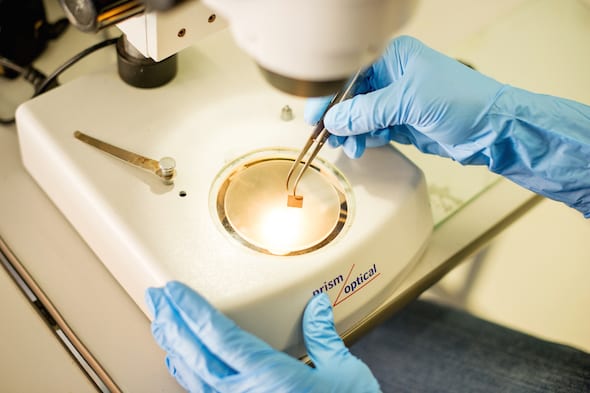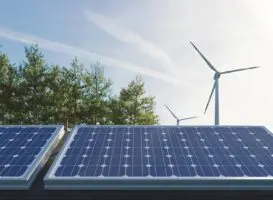Queensland battery materials business Nano-Nouvelle has cleared another key hurdle on the path to what could be a huge global market, after successfully proving its lithium-ion battery boosting nanotechnology is ready for plug-and-play production.
As we have reported here before, Nano-Nouvelle’s technology is a three-dimensional nano-structured, porous electrode aimed at overcoming current battery limitations by allowing them to charge faster and last longer.
The Sunshine Coast-based company – which recently won a $422,201 grant via the federal government’s Entrepreneurs’ Program – completed its first roll-to-roll production trial last December, successfully running a roll of raw membrane through a chemical plating process to produce copper-plated Lumafoil.
Used in place of solid metal foil current collectors, which conduct stored electricity to an outside circuit, Nano-Nouvelle’s Copper Lumafoil has been shown to boost li-ion battery capacity by up to 50 per cent.
It also weighs up to 70 per cent less than current collectors used in lithium-ion batteries and offers faster electrolyte wetting, and can lower battery cell assembly cost by as much as 12 per cent.
Now, in a trial conducted last month with US-based Polaris Battery Labs, the company says it has successfully proven that graphite adheres well to Lumafoil’s porous nanostructure and is strong enough to work in present battery manufacturing lines – addressing a key customer concern.
The breakthrough also promises further battery production cost cuts, through quicker assembly and extended battery life through better active material adhesion.

“(The trial) demonstrated Lumafoil is a plug-and-play replacement for solid copper current collectors in batteries,” said Nano-Nouvelle CEO Stephanie Moroz in a statement on Tuesday. (Moroz is to speak at the Innovation and Start-ups in the energy sector conference co-hosted by RenewEconomy in Sydney in early May).
“By showing that graphite adheres well to our nanomaterials and that Lumafoil rolls are strong enough for commercial battery production lines, we have passed two major tests set by our customers.
“If a customer purchases our Lumafoil current collector material, they can use it as a drop-in replacement in their existing manufacturing process.
“Our next step is to show our processes can scale to produce commercial quantities.”
In separate comments emailed to RenewEconomy, Moroz said the company was currently working with manufacturing equipment suppliers to produce rolls of material that would be long enough for battery makers to use in their normal assembly process.
“This equipment is similar to what was used the trial but requires longer rolls as their equipment is larger.”
“The appeal of the Lumafoil is that it offers benefits while being a direct replacement for the solid copper used in nearly all lithium-ion battery anodes today,” she said.
“Therefore the market is very large, including all applications of lithium-ion batteries from drones to electric vehicles.”
Moroz said Nano-Nouvell had already attracted interest from “several large global lithium-ion battery makers,” as well as some smaller niche high performance battery makers.
“We are sending them Lumafoil sheets for battery testing at the lab scale and they are requesting the longer rolls to be able to test larger batteries,” she said.
(Note: Moroz is due to speak at Moroz is to speak at the Innovation and Start-ups in the energy sector conference co-hosted by RenewEconomy in Sydney in early May. To find out more details please click here).










